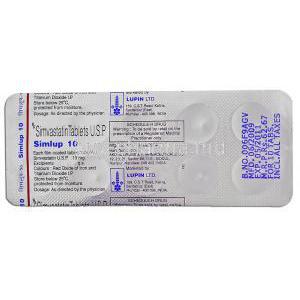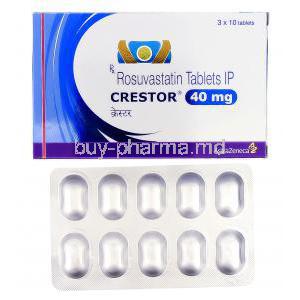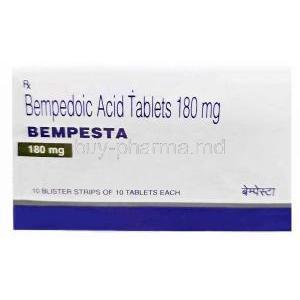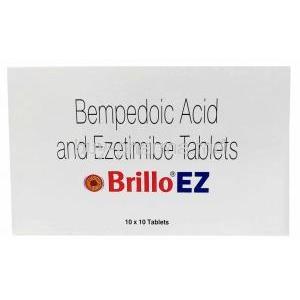Ezetrol
- I. Introduction
- II. Uses of Ezetrol
- III. How Ezetrol Works
- IV. Dosage and Administration
- V. Composition
- VI. Side Effects
- VII. Common Side Effects
- VIII. Off-label Use of Ezetrol
- IX. Storage of Ezetrol
- X. Interactions with Other Medications
- XI. Warnings and Contraindications
- XII. Careful Administration and Monitoring
- XIII. Important Precautions
- XIV. Special Populations: Administration Concerns
- XV. Overdosage: Signs, Management, and Precautions
I. Introduction
Over the years, the field of medicine has made progress, leading to advancements in the discovery and development of drugs. One such pharmaceutical breakthrough is Ezetrol.
Origin and Development of Ezetrol
In the 20th century, Ezetrol, or its generic version, Ezetimibe, emerged as a groundbreaking solution to tackle the growing issue of high cholesterol levels. Through research and clinical trials, this medication quickly found its place as an effective treatment option.
Importance in Modern Medicine
Amongst the options available for lowering cholesterol, Ezetrol stands out due to its unique mechanism, differentiating it from traditional statins. This medication provides hope for patients who cannot tolerate statins or need treatment. Considering how widespread cardiovascular diseases are, the importance of Ezetrol in reducing the risks associated with atherosclerosis cannot be overstated.
II. Uses of Ezetrol
Primary Indications: Cholesterol Management
Ezetrol mainly focuses on addressing high cholesterol, particularly LDL cholesterol often known as the “bad cholesterol.” By reducing these lipid levels, the medication significantly reduces the risk of complications12.
Benefits in Cardiovascular Health
Ezetrol goes beyond cholesterol management and strengthens cardiovascular resilience. It reduces the risk of heart attacks and strokes by helping to prevent plaque buildup in the arteries. By regulating cholesterol levels, it offers protection against peripheral vascular diseases.
III. How Ezetrol Works
Mechanism of Action: Inhibition of Cholesterol Absorption
Unlike medications that lower lipids, Ezetrol works differently by not stopping the production of cholesterol. Instead, it hinders the absorption of cholesterol in the intestines. This mechanism leads to a decrease in the levels of circulating cholesterol.
Impact on the Lipid Profile
Regular use of Ezetrol results in a decrease in LDL cholesterol levels. It also helps reduce triglycerides and slightly increases HDL, known as the "good cholesterol." Overall, it promotes a lipid environment that supports vascular health.
IV. Dosage and Administration
Standard Dosage Recommendations
Usually, healthcare professionals recommend taking a 10mg Ezetrol tablet a day. However, it is crucial to follow the guidelines given by your healthcare provider since individual needs may vary.
Route of Administration: Oral Use
Ezetrol is meant to be taken. It is generally recommended to swallow the tablet with a glass of water regardless of whether you have eaten.
Frequency and Timing Considerations
To maximize the advantages of therapy, it is crucial to maintain regularity. Taking the medication every day simultaneously ensures a steady level of the drug in your system and increases its effectiveness.
V. Composition
Active Ingredient: Ezetimibe
Ezetimibe plays a role in the effectiveness of Ezetrol. This critical component directs the drug's efforts to lower cholesterol levels.

Inactive Components and their Functions
Apart from Ezetimibe, Ezetrol contains inactive ingredients. These additional components, including binders and disintegrants, help with the delivery and stability of the medication.
VI. Side Effects
Most Frequent Side Effects
Gastrointestinal disturbances include feeling nauseous, having diarrhea, experiencing headaches, feeling dizzy, and feeling discomfort in the muscles.
Rarer but Severe Side Effects
Sometimes, patients may experience severe symptoms such as liver problems or significant muscle breakdown, which requires immediate medical attention.
Long-term Impact and Monitoring
Regular monitoring is necessary, for individuals who use a substance chronically. It is advisable to undergo liver function tests and lipid profiles to prevent any possible negative effects and ensure the effectiveness of treatment.
VII. Common Side Effects
Gastrointestinal Discomfort
Some patients might encounter stomach discomfort, bloating, or occasional constipation, which usually resolves independently.
Muscular Symptoms and Fatigue
Muscle pain, while not very common, can be pretty bothersome. If you're also feeling tired at the time, you might need to adjust your dosage accordingly.
Potential Allergic Reactions
Sometimes, people may experience rashes, itching, or more serious allergic reactions. Although these instances are uncommon, it is important to stop using the product and seek advice.
VIII. Off-label Use of Ezetrol
Known Off-label Indications
Although there are some studies and anecdotal reports suggesting that Ezetrol may be effective in managing Fatty Liver Disease, more rigorous scientific evidence is still needed to fully support these uses and their associated outcomes3.
1: MedBroadcast 2: Patient 3: Cleveland Clinic : National Institute of Diabetes and Digestive and Kidney Diseases
Research and Studies Supporting Off-label Use
Numerous studies have suggested advantages, but concrete evidence remains uncertain. It is crucial to proceed and depend on the guidance of experts.
Safety and Efficacy Concerns
Although showing potential, undertaking activities outside of approved uses raises safety concerns. It is crucial to conduct evaluations and maintain strict monitoring as essential requirements.
IX. Storage of Ezetrol
Ideal Storage Conditions
Ezetrol does best when stored in an dry place away from direct sunlight. The ideal temperature range is typically between 15 30°C, which's, around room temperature.
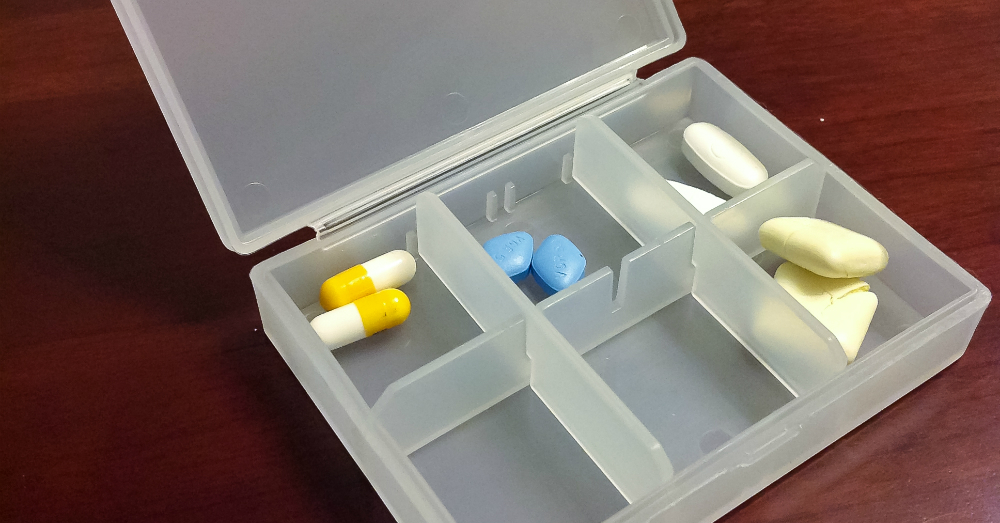
Shelf Life and Expiration Considerations
It is essential to consider the expiration date to ensure that the medicine remains effective. When tablets have expired, it is recommended to dispose of them in a friendly manner.
Handling Precautions
Keep Ezetrol away from children. If an accidental overdose occurs, seek medical help.
X. Interactions with Other Medications
Drugs to Avoid When Taking Ezetrol
Ezetrol, although it is practical, may have interactions with medications. Combining it with drugs such as specific fibric acid derivatives or high doses of statins increases the risk of myopathy. It is also essential to be cautious when using anticoagulants alongside Ezetrol, as it can alter their effects.
Potential Effects on Concomitant Medications
Antacids: To ensure Ezetrol absorption, taking them at least a few hours apart is recommended. Cyclosporine: Taking them together can lead to increased levels of cyclosporine in the body. Cholestyramine: It reduces the effectiveness of Ezetrol, so it's advised to take them at times.
Safe Combinations: Recommendations and Precautions
When Ezetrol is taken with statins or fenofibrate, its ability to lower lipids is enhanced. However, it is crucial to have medical supervision to prevent any possible adverse effects.
XI. Warnings and Contraindications
Conditions where Ezetrol Should Not be Used
Ezetrol should not be used if a person is known to have an allergy or sensitivity to any of its ingredients. Furthermore, it is not recommended to take Ezetrol along with statins if someone has a liver disease that's currently active.
Potential Risk Factors and Considerations
It is essential to inform the doctor about any liver issues you may have, as Ezetrol can affect the levels of liver enzymes. Patients who have experienced myopathy in the past should also be cautious.
Signs Indicating Discontinuation of Therapy
If you experience tiredness, yellowing of the skin or eyes (jaundice), or severe muscle pain, you must stop the therapy immediately and seek medical advice.
XII. Careful Administration and Monitoring
Regular Blood Tests and Follow-ups
Regularly checking lipid profiles and liver function tests is essential to ensure the effectiveness and safety of therapy. These tests help identify any abnormalities, allowing intervention when necessary.
Monitoring for Potential Side Effects
It is crucial to monitor for any potential side effects, such as digestive problems or muscle discomfort, and take immediate action to address and manage them effectively.
Adjusting Dosage Based on Individual Needs
Each person's reaction to Ezetrol is unique. Some individuals may require dosage adjustments, highlighting the importance of treatment plans.
XIII. Important Precautions
Dietary and Lifestyle Recommendations
While Ezetrol helps regulate cholesterol levels following a diet, cholesterol enhances its effectiveness. Additionally, engaging in physical activity and managing weight support its therapeutic advantages.
Limiting Alcohol and Other Interfering Substances
It is recommended to practice moderation when consuming alcohol, as excessive intake can increase the risk to your liver. Additionally, avoiding taking any prescribed medications or herbal supplements is wise without consulting a medical professional beforehand.
Recognizing and Reporting Unusual Symptoms
It is essential to report any unusual symptoms, such as extreme tiredness or unexplained muscle pain. Being vigilant in this regard can help prevent any complications.
XIV. Special Populations: Administration Concerns
Administration to the Elderly: Special Considerations
Due to changes in physiology and the use of medications, older people might have a higher sensitivity to Ezetrol. Therefore, it is advised to take an approach and start with a lower dosage.
Administration to Pregnant Women and Nursing Mothers: Safety and Recommendations
The safety of Ezetrol during pregnancy is still uncertain. Using it, considering the potential risks involved is recommended if necessary. For breastfeeding mothers, it is essential to be cautious as there are uncertainties regarding its presence in breast milk.
Administration to Children: Dosage and Precautions
The use of Ezetrol in patients requires careful monitoring. Although it is authorized for children ten and older, the dosage should be adjusted according to their weight and how they respond to the treatment.
XV. Overdosage: Signs, Management, and Precautions
Recognizing Symptoms of Overdose
While it is challenging to pinpoint symptoms of an overdose, one may experience intensified versions of typical side effects.
Immediate Steps and Medical Interventions
If someone is suspected to have overdosed, it is essential to seek medical help. Providing support and closely monitoring the person are aspects of managing the situation.
Prevention Strategies
It is crucial to keep medication out of the reach of children and follow the doses. Additionally, conducting reviews of your medicine can help prevent accidental overconsumption.








